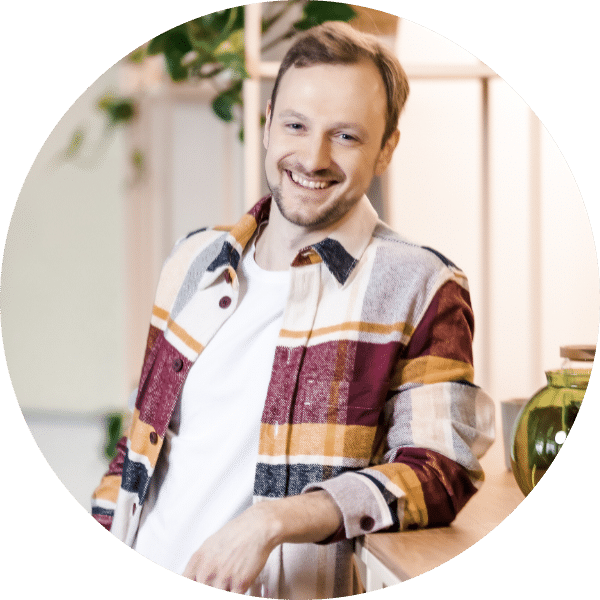When we compare animations from a dozen or so years ago with those created today, you can see the difference in the degree of advancement, and also in the style and graphics.
This is largely a matter of fashion.
Below I will list a few trends that I think will conquer the market for corporate animation in 2022. I was guided by inquiries coming into our company, and by research on other animation studio’s work.
#1 Morphing
Morphing (from the Greek word for “metamorphosis,” which perfectly captures the nature of this technique) involves transforming images by reshaping elements into fluid-like objects and transforming them into new images. Such smooth transitions are slightly surreal and very pleasing to the eye.
This effect is great for short commercials or animations with abstract themes where elements change quickly, such as cloud solutions.
Because this effect is quite “soft”, it can work well for animations with a lot of angular elements (screens, buildings) as it will lighten the video.
Animation for SHARP about Plasmacluster technology
#2 Moving away from stock footage
Today, animations can be created from stock footage at a low cost. The downside is that they all look like they came from the same factory, and their quality often leaves a lot to be desired.
Therefore, more and more companies that come to us, rely on highly personalized animations, which emphasize the specific characters of the brand. Through properly animated characters, colors, and logo placement. Sometimes we reproduce buildings and faces of particular characters.
In animation for eBrama we drew a lot of details specific for the company and the place mentioned
#3 Minimalism on Screen
In many minimalist animations, most of the screen is left undeveloped, allowing you to focus all your attention on the objects visible on the screen.
Thin lines further relieve the animations. We focus more on the shapes in them rather than the colors.
It’s also simply a matter of… aesthetics. This style is fashionable and gaining in popularity.
Slack’s animation
#4 Limited colors
The current trend is to tell a story in animation using only a few colors, usually in line with the style guide of the brand.
This has several advantages:
- such animation does not give the impression of being overloaded with colors
- allows you to highlight certain elements in color and this is often important for the company
- the visual identity is consistent with the company’s messages – you can immediately see whose material it is.
FORTE’s animation
#5 Combining video and animation
Animations and animation elements can add variety to a traditional video.
Not only do they help keep viewers’ attention, but it can also help them remember more information… and understand it better!
After all, what we see on the screen is what the speaker is talking about. This takes the pressure off the imagination. We do not have to “map” it out in our heads and all the numbers and statistics are clearly displayed.
By combining video and animation we can also show the people behind the company on the screen.
Animation with video elements for ERC – about the Martian robot competition
#6 Incorporating graphic elements from the logo into the animation
This has been one of the top trends in branding for quite some time.
Depending on how the logotype elements are incorporated into the animation, it can add dynamism to the brand image, and emphasize its flexibility. It all depends on how the logotype is presented.
We can say that it is a way to show “another face of the company”.
Animation for Cubic Inch
Of course, aesthetics is one thing, and the message is another. It’s important that the animation pleases the eye, but what if it doesn’t sell/educate employees and customers?
That’s why at ExplainVisually, we put emphasis on building the right script. You can read about the power of well-structured animations (not always the most beautiful ones!) in this article: 7 explainer videos.
In you are looking for an interesting website about video design check out Design Rush.
More examples of trending animated videos:

She studied Japanese and linguistics at the University of Warsaw, but it was her work for an NGO, first as a volunteer, and then professionally, that shaped her interests. As a coordinator of one of the campaigns she organized conferences, meetings at the Parliament, fashion shows, made interviews with politicians and celebrities. She also took care of social media and marketing. Now she is responsible for marketing and running social media at ExplainVisually.


